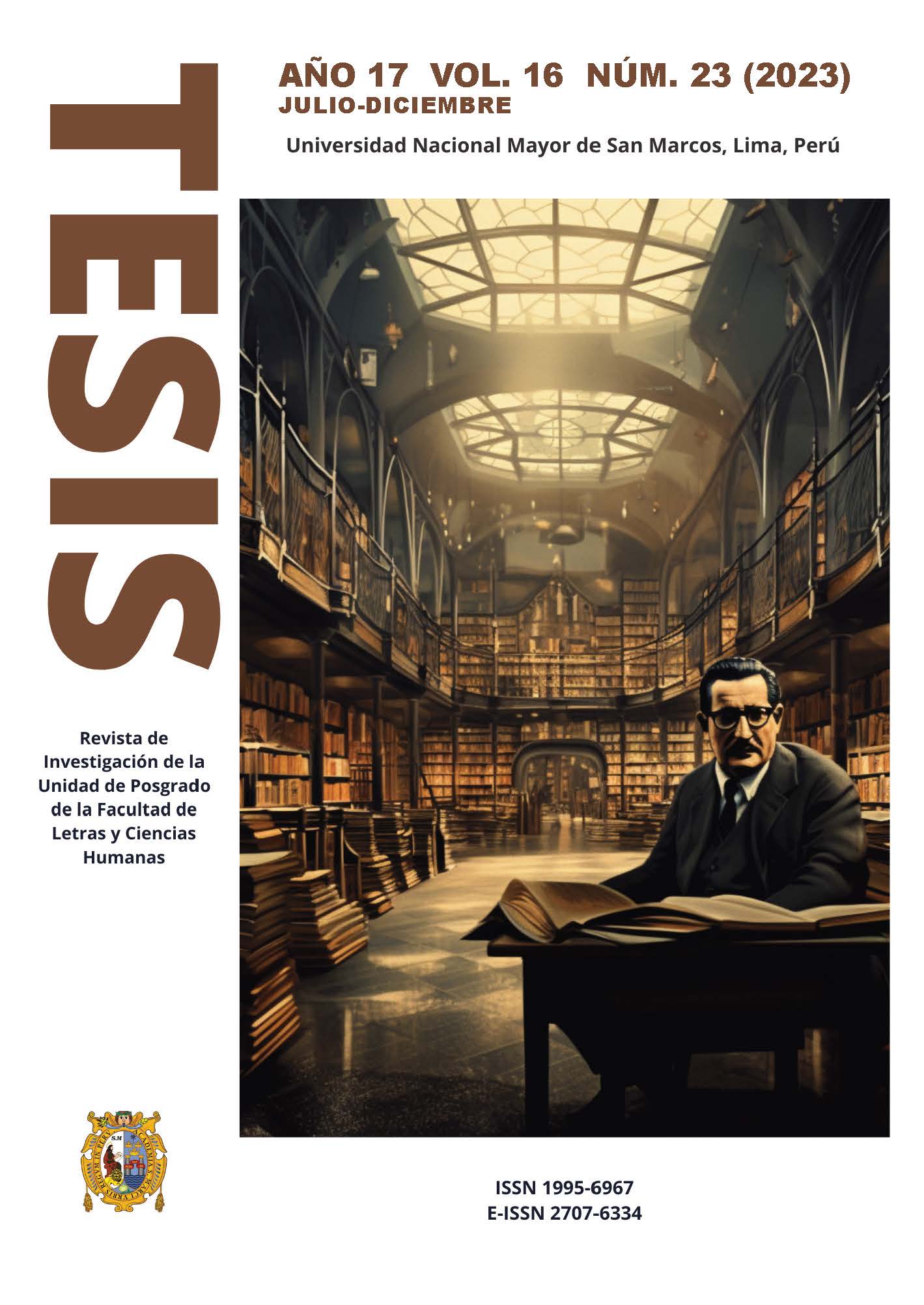The oppressive house: The inner eye in Fernando de Szyszlo’s surrealist short film Esta pared no es medianera
DOI:
https://doi.org/10.15381/6qvzy648Keywords:
avant-garde, surrealism, Fernando de Szyszlo, surrealist image, Peruvian cinema, cinema historyAbstract
In 1952, Peruvian painter Fernando de Szyszlo made his only short film, Esta pared no es medianera. Along with other Latin American short films that emerged in the mid-twentieth century, this film expresses an interest in recovering some of the expressive forms of emblematic films from the 1920s that belonged to the surrealist movement, whether from the use of images in a dreamlike key or from some of the precepts of the thematic universe around the power of the unconscious. This film also reflects that almost three decades after the publication of the Manifesto of Surrealism (1924), this literary and artistic movement remained vital in Peru, not only through gatherings, debates, publications of poems, but also from the creative process and topics of this film. From the study of the motif of the house as an interior space of oppression, this article establishes connections between the theoretical concept of the interior model (or inner eye) and the proposal of interpellation to that idea developed in Szyszlo’s film. In this sense, this text seeks to demonstrate that through the figure of the house a poetics of oppression is constructed in this short film, in opposition to the exterior spaces that embody the liberation of the unconscious free of guilt, and therefore, to the inner eye.
References
Bachelard, G. (2002). La poética del espacio. (2.ª ed.). Fondo de Cultura Económica. Breton, A. (2001). Manifiestos del surrealismo. Argonauta.
Chevalier, J., Gheerbrant, A., Silvar, M., Rodríguez, A. y Puig, J. O. (1995). Diccionario de los símbolos. Herder.
Cirlot, J. E. (2005). Diccionario de símbolos. Siruela.
Cirlot, V. (2010). La visión abierta. Del mito del Grial al surrealismo. Siruela. Dalí, S. (1934) El surrealismo. Revista Hispánica Moderna, 3, 233-234.
Delluc, L. (1989). Fotogenia. En J. Romaguera y H. Alsina (eds.), Textos y manifiestos del cine. Estética. Escuelas. Movimientos. Disciplinas. Innovaciones (pp. 327-333). Cátedra.
De Palma, P. (1947). ¿Sobrevivirá el surrealismo? El Correo de Ultramar, 1(3).
Dulac, G. (1989). Las estéticas. Las trabas. La cinematografía integral. En J. Romaguera y H. Alsina (eds.), Textos y manifiestos del cine. Estética. Escuelas. Movimientos. Disciplinas. Innovaciones (pp. 89-99). Cátedra.
González, A., Marchán, S. y Calvo, F. (2020). Escritos de arte de vanguardia (1900- 1945). Istmo.
Lauer, M. (1992) Un asalto a la ANEA: Surrealismo limeño de los 50. En Avatares del surrealismo en el Perú y en América Latina. Institut Français d’Études Andines.
Minguet, J. (2003). Salvador Dalí, cine y surrealismo (s). Parsifal.
Semanario Peruano. (12 de febrero de 1951). Fernando de Szyszlo regresa de París. Semanario Peruano, (12), 21-22.
Spies, W. (1991). Max Ernst collages: The invention of the surrealist universe. En M. Sers Tavares (2010), Comprender el cine: Las vanguardias y la construcción del texto fílmico. Comunicar: Revista Científica de Comunicación y Educación, 18(35), 43-51.
Rodagut, A. C. (2017). Iconografía del ojo. A partir del cine de autores afines a la estética surrealista (1926-1932). [Tesis de doctorado, Universitat Pompeu Fabra].
Romaguera, J. y Alsina, H. (Eds.) (1989). Textos y manifiestos del cine. Estética. Escuelas. Movimientos. Disciplinas. Innovaciones. Cátedra.
Marinetti, F., Corra, B. y Settimelli, E., (1989). La cinematografía futurista. En J. Romaguera y H. Alsina (eds.), Textos y manifiestos del cine. Estética. Escuelas. Movimientos. Disciplinas. Innovaciones (pp. 20-24). Cátedra.
Szyszlo, F. (2017). La vida sin dueño. Alfaguara.
Downloads
Published
Issue
Section
License
Copyright (c) 2024 Mónica Grisell Delgado Chumpitazi

This work is licensed under a Creative Commons Attribution 4.0 International License.
THE AUTHORS RETAIN THEIR RIGHTS:
(a) The authors retain their trademark and patent rights, and also on any process or procedure described in the article.
(b) The authors retain the right to share, copy, distribute, execute and publicly communicate the article published in Tesis (Lima) (in example, depositing the article in an institutional repository or publish it in a book), with recognition of its initial publication in the Tesis (Lima).
(c) The authors retain the right to make a later publication of their work, to use the article or any part of it (for example: a compilation of their works, notes for conferences, thesis, or for a book), provided that they indicate the source of publication (authors of the work, magazine, volume, number and date).






